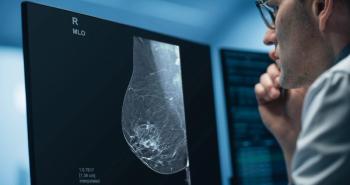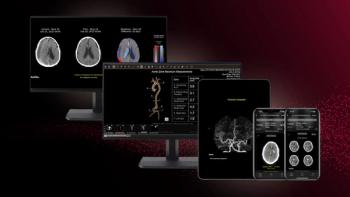
Hitachi readies PET camera dedicated to cardiology
Next week at the SNM meeting, Hitachi Medical Systems America (HMSA) will unveil a new version of its Sceptre PET system, one dedicated to cardiac applications. The system, called SceptreC, is configured to use rubidium-82 to gauge myocardial perfusion and fluorine-18 FDG to assess myocardial viability.
Next week at the SNM meeting, Hitachi Medical Systems America (HMSA) will unveil a new version of its Sceptre PET system, one dedicated to cardiac applications. The system, called SceptreC, is configured to use rubidium-82 to gauge myocardial perfusion and fluorine-18 FDG to assess myocardial viability.
The new configuration uses the basic Sceptre platform that Hitachi has been selling primarily for oncological applications and, most recently, has hybridized with CT. SceptreC will be the PET camera alone, optimized with Emory Cardiac Software PETtools for cardiac quantification. Gating equipment has been added and the table is stationary, as the multiple positions necessary in oncology are not needed when doing cardiac studies.
The new configuration is available for immediate delivery, according to Raymond Wtulich, PET and PET/CT product manager for HMSA. It will sell for less than $900,000.
SceptreC will have the advantages that accrue from its reliance on positron rather than gamma imaging, namely a 30-times-higher photon flux. This occurs primarily because PET detectors do not need collimators. The higher photon flux translates into substantially higher sensitivity, Wtulich said, than is possible with gamma cameras. PET also provides better temporal resolution.
Considering the technical advantages and the extraordinary reimbursement for PET cardiac procedures, which can go as high as $2400, Wtulich believes the product will win a popular following among cardiologists. And there are advantages for the patient, as well.
Because rubidium has a half-life of just 75 seconds, stress/rest myocardial perfusion studies can be done in under 40 minutes. This compares to several hours for a stress/rest study on SPECT, said Wtulich, who plans to woo prospective buyers with the economic and patient-comfort advantages that accompany this time savings. This might take a bit of doing, however.
Over the last several years, the PET community and its suppliers have turned to systems combined with CT. They provide value when doing oncology studies, because the anatomical context provided by CT helps in the interpretation of PET-indicated hot spots. The CT component, however, is of little proven use in cardiac studies, Wtulich argues. Regardless, the major vendors, including GE, Siemens, and Philips, have announced the development of PET/CT systems optimized for cardiac imaging.
"We believe dedicated PET is a very comparable alternative to PET/CT - and at a lower cost point," Wtulich said.
SceptreC could turn into a money maker in the right hands, given the current level of reimbursement and the radiopharmacies, such as Eastern Isotopes, that deliver rubidium to clients. Sites focusing on cardiac imaging could transition to on-site rubidium generators, if the volume of exams is high enough. Wtulich believes the demand for SPECT studies demonstrates that PET cardiac imaging is economically viable.
"SPECT operations are doing six to eight patients a day per camera," he said. "Nuclear cardiology is the largest segment of nuclear medicine."
Newsletter
Stay at the forefront of radiology with the Diagnostic Imaging newsletter, delivering the latest news, clinical insights, and imaging advancements for today’s radiologists.




























